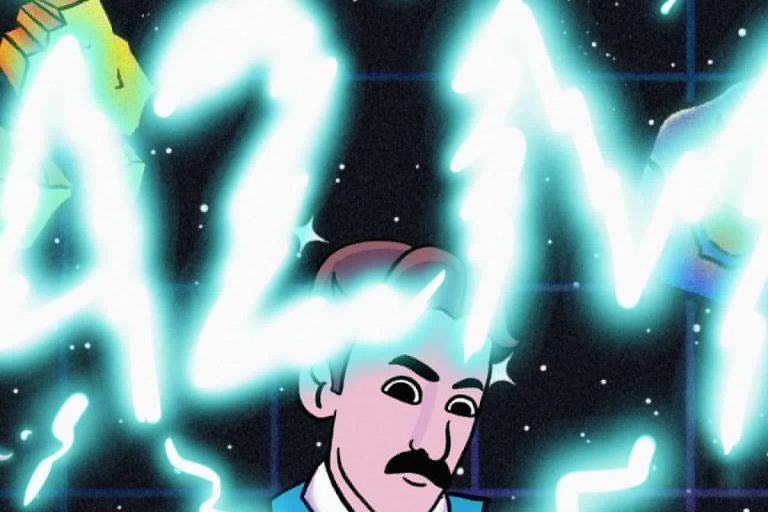As Solana’s first Layer-2, Solaxy ($SOLX), pulls in $42 million, is Ethereum’s Layer-2 strategy making the network less sustainable?
That’s the claim from Max Rebol, CEO and Managing Partner of Harbour Industrial Capital – a Polkadot-focused VC fund. According to Rebol, Ethereum’s scaling model may be “doomed from the start,” arguing that its reliance on external Layer-2s only fragments the ecosystem further.
Meanwhile, Solana is preparing for a very different kind of evolution – with the upcoming launch of Solaxy ($SOLX), its first-ever Layer-2 chain.
But unlike Ethereum’s approach, Solaxy isn’t here to patch scaling problems. Solana already processes thousands of transactions per second. Instead, Solaxy is designed to make Solana more dependable, modular, and ready to onboard the coming flood of innovation and adoption.
FOMO is setting in. Solaxy has now raised $42 million in its presale, with just 18 days left for early backers to lock in before $SOLX moves to exchanges at a higher price.
At just $0.001738 per token, $SOLX is trading at a steep discount – but with the price increasing every two days, timing is everything.
The Hidden Cost of Ethereum’s Layer-2 Dependence
Ethereum’s existence has become increasingly dependent on Layer-2 solutions, introduced to solve its well-known issues of high fees and slow transaction speeds.
Even founder Vitalik Buterin has acknowledged this reality. However, this patchwork approach has drawn mounting criticism over the years, raising doubts about whether it’s truly a sustainable path forward.
As mentioned, Max Rebol has criticized Ethereum’s L2 landscape, arguing that it disjoints the ecosystem rather than strengthens it.
Instead of creating a more usable network, Ethereum has splintered into dozens of semi-compatible rollups – each with its own quirks, bridges, and limitations. This adds more complexity for developers and users alike, not better performance.
He also argues that these Layer-2s contribute little to the network itself, instead benefiting from Ethereum’s security while giving nothing back, branding them “free riders.” And the numbers support his point.
Despite over $39 billion in total value locked (TVL) across Ethereum’s Layer-2s, rollups still suffer from inconsistent UX, opaque governance structures, and reliance on centralized sequencers.
Interoperability remains a major hurdle, and bridging assets across Layer-2s is still clunky and risky. What was meant to be a fix now feels more like fragmentation disguised as innovation.
Scaling Without Splintering – Solaxy’s Seamless Vision for Solana
Now Solaxy steps in – not to fix Solana, but to elevate it. Rather than masking flaws, it adds modular upgrades to an already high-performance chain, while preserving composability and cohesion.
Built as a Layer-2 scaling solution, Solaxy uses roll-up bundling and off-chain enhanced processing to optimize transaction throughput and reduce fees. It’s ideal for high-frequency dApps – from meme coins and gaming to low-latency finance – all while retaining Solana’s native speed and structure.
Its layered design lets developers plug in tailored components without trade-offs. And unlike Ethereum’s siloed rollups, Solaxy keeps everything composable on-chain.
That’s already visible in its live testnet bridge, built with Hyperlane and connected to Solana Devnet. Native SOL transfers are live, and when the mainnet bridge launches, it’ll unlock interoperability with Ethereum for seamless cross-chain flows.
Where Ethereum’s L2s splinter usability, Solaxy is building toward cohesion, not just within Solana, but across the broader blockchain landscape.
Solaxy’s DEX and Igniter Are Closing the Loop
Another major component of the Solaxy stack is about to go live: the Solaxy DEX.
This native decentralized exchange will serve as the trading hub for all tokens launched through Igniter – Solaxy’s no-code, rollup-native token launchpad introduced on May 19.
Igniter lets anyone launch a token in minutes – without needing to write a single line of code. From memes to games to financial utilities, projects start here. Once a token completes its bonding curve, it flows directly into the DEX, unlocking instant liquidity.
This seamless pipeline from creation to exchange makes the Solaxy DEX more than a trading venue – it’s the circulatory system of the ecosystem, powering the flywheel for every project built on Solaxy.
Final Stretch – The Future of Solana Is Being Built Now Through Solaxy
As Ethereum’s Layer-2s face mounting scrutiny, Solaxy is charting a different course – one rooted in cohesion, not fragmentation.
With its full-stack ecosystem coming to life, including the live testnet bridge, Igniter launchpad, and upcoming DEX, Solaxy is positioning itself as the modular engine powering Solana’s next evolution.
But the window is closing fast.
To join before the presale closes, visit the Solaxy website and connect your preferred wallet.
All $SOLX tokens purchased can be staked immediately, with staking currently offering a dynamic 96% APY – adjusted in real-time based on total pool participation.
For the best experience, use Best Wallet – the official self-custody partner for Solaxy. It offers seamless multichain support, full visibility into your $SOLX holdings, and is optimized for future integrations across the Solaxy ecosystem. Download Best Wallet on Google Play or the Apple App Store.
Stay updated by following Solaxy on Telegram and X.
The post Ethereum L2s Doomed But Not Solana’s First L2 – Solaxy Blows Past $42M, 18 Days Left in Presale appeared first on Cryptonews.

